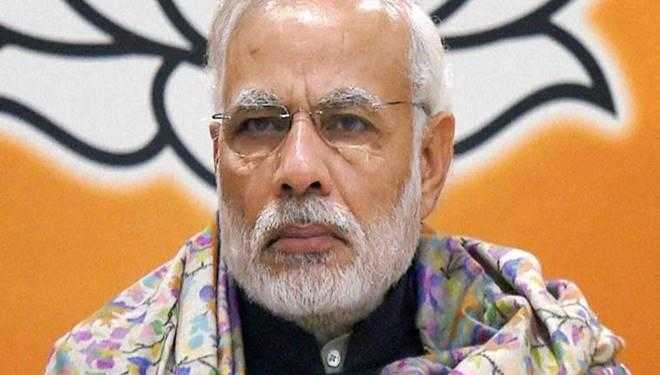In the background of the sluggish growth figures, a lot has been talked about in the last few days, whether the Modi government has officially killed the Indian economy. Most of the economists and finance pundits have already concluded that the current economy is on life-support due to the twin shocks of demonetization and the GST. They have come to this conclusion based on the GDP figures so far of FY2017 and the slowing of local demand.
So did PM Modi kill the economy by following up demonetization with GST as these economists seem to be suggesting? We, here, are going to make a detailed truth analysis based on facts and figures, not on emotions and rhetoric.
When the former PM Dr. Manmohan Singh described demonetization as a “monumental disaster” and suggested that it could lead to the GDP declining by two percentage points, we thought it was an exaggeration. But, ten months past the exercise, the figures seem to suggest otherwise. Even if the government does not agree with Dr. Singh’s words, the talks of the need for a stimulus package from the government means it at least agrees the economy is doing well and that it needs an external push.
Demonetization sure dealt a blow to the economy and local consumption. There is little doubt that demonetization badly hit the supply chain systems especially in the informal sector, which was majorly cash-driven, and it could take at least another year before this sector revives. Real estate sector took the biggest hit since it was one of the biggest consumers of the black money, but wasn’t that the point! To suck out all the black money from the system that caused the artificial inflation in the real-estate sector so that middle class people can afford the houses that they could not before. So, although it had large implications for jobs creation in the industry, DeMonetization, along with the new RERA rules, will be a big success if it helps in reforming real estate and makes housing affordable in the medium-term.
GST, too, was aimed at the same informal sector. At the very core level, demonetization and GST are not very different from each other in their impact on the cash-driven informal sector because both these exercises forced the informal sector companies and MSMEs to give up their existing methods (to save/steal tax from the government) and become a part of the formal supply chains and start paying taxes that they owe to the government. However, the core target of both the exercises was different. While demonetization was targeted at the existing black money that had been hidden away since ages, GST is targeted towards preventing the creation of black money through the informal channels. Bringing the Goods and Services Act immediately after demonetization surely aggravated the pain but which politician, including Manmohan Singh, had not been pushing for GST for years due to its long-term benefits? We can debate about the timing of GST, but it HAD to be brought in at least 2 years before the elections so that the suffering associated with it was absorbed over time and the people started seeing its benefits. To sum it up, even if demonetization hadn’t hit the informal sector, GST would have, but in a gradual and manageable pace.
None of the above things is to say that the Modi government didn’t make mistakes, it did. The government failed in its attempt to bring in labour reforms and land reforms or reforming the Congress-era retrospective taxes, which would have impacted the ease of doing business in a big way. Instead, the government went the opposite way – it started capping drug prices and creating bigger PSUs rather than working on making the existing ones profitable or privatizing them. It went so deep into the socialist mode that it sidelined the one significant thing that could have helped the country deal with this double whammy – improving the ease of doing business.
The chaos surrounding the implementation of GST created more confusion in the minds of the people, who were already wary of the government after being bitten by the DeMo bug. Moreover, after GST was introduced, MSMEs lost their USP of low costs due to tax theft. One way to fix this was to improve their efficiency and profitability by reducing red-tape, lower taxes and introducing land and labour reforms, which never went through. The government thought that it had done enough to help small businesses, but has slowly been proven wrong. The demonetization and GST shock would not have been so painful and the assimilation of the informal sector into the formal sector would have been easier had the government taken strong measures to help them at the ground level.
However, to be fair to the government, it did try to get in the reforms long before GST was passed, but it could not due to the stiff opposition faced by the government in the upper house of the Parliament. Land reforms were not allowed to pass and a negative image of the government was portrayed among the people for introducing this bill in the first place. The Congress, which was in the majority in the Rajyasabha, stalled the passage of the GST bill by shamelessly halting Rajyasabha proceedings for over a year. So, the government didn’t have enough time to prepare the citizens for GST and thus, cushioning its effects to certain extent.
Having said that, there is no dispute on the long term benefits of GST which we should be able to experience by the end of 2018. We all know how the Modi government breathed life into a dying economy that India was, before Modi took office in 2014. The retail inflation reduced from 9.4% to 4%, with wholesale inflation in negative. The fiscal deficit also reduced from 4.5% in FY13-14 to 3.5% in FY17-18. Though consumption has reduced due to reduction in global demand and GST, it is bound to pick up in the coming months. Given, Modi’s prior record with handling the economy, we can hope that things will get better in the coming days, the consumption will pick up and we will slowly move towards fewer taxes, higher incomes and more money in our pockets. No Modi didn’t kill the Indian Economy, He prevented its slow and excruciating death.































